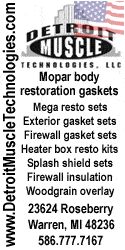Found this on Dragzine
More Than Hollow Promises — Ferrea Hollow-Stem Valve Technology
By
GREG ACOSTA AUGUST 21, 2020
Lately, we’ve been covering a lot of high-RPM engine builds, some which are incredibly expensive, one-off deals, and some that are approaching the level of ridiculously attainable as far as cost and technology. One of the things that have brought high-RPM engine builds out of the stratosphere and into the realm of everyday performance is the availability of lightweight valvetrain components.
Once considered an “exotic material” according to rulebooks, Titanium has become extremely common in today’s engines. However, the weight savings provided comes at a cost. The material is both more expensive than the stainless-steel alternatives, and harder (and thus, more expensive) to machine. However, Ferrea offers valves that can rival the weight savings offered by Titanium, as well as come in at a lower price point.
Besides gun-drilling and micro-polishing, the key to Ferrea’s success with hollow-stem valves is the concentricity of the void. By having perfectly even wall-thickness throughout the stem, strength is increased.
To do that,
Ferrea Racing Components has developed a process that not only gun-drills the valve stem to reduce weight, but also micro-polishes the passage. That polishing eliminates any potential stress risers and creating an even wall surface, making for a strong valvestem, while reducing the valve’s weight by up to 22-percent. That gives you a Titanium valve’s weight, without a Titanium valve’s price.
Then, if budget isn’t a concern, and all you are worried about is getting down to the absolute minimum valve weight possible, Ferrea also offers hollow-stem Titanium valves. The same process of gun-drilling and micro-polishing is performed as with the stainless-steel valves. However, there are no cost-savings here. In fact, if you want hollow-stem Titanium valves, you need to call Ferrea to order directly. But, there is nothing lighter, if for some reason you need to shed every possible gram of mass from your valvetrain.
















